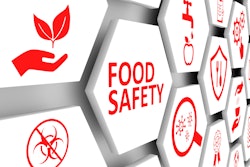
The Food and Drug Administration (FDA) witnessed product recalls hit a 10-year high in 2022 with 419 million units recalled, a 700.6% increase from the year before. Though previous legislation, coupled with long-standing industry standards, have ensured some level of transparency in food supply chains, the need to enhance traceability, especially for specific foods, are evidenced by the rise in recalls and foodborne illness.
On the company-level, brands are also under pressure to comply with new federal regulations, such as the newly released Food Traceability Final Rule, part of section 204 under the Food Safety Modernization Act (FSMA). FMSA 204 has set into motion a major transformation for food companies involved in the manufacturing, processing, packaging, or holding of certain high-risk foods on the FDA’s Food Traceability List (FTL). These regulations, coupled with growing pressure from consumers, will revolutionize the way food supply chains operate and the way industry leaders and regulators respond to foodborne illness, contamination, and other impediments to consumer safety.
Supply chains have a critical – and complicated – role in ensuring food safety
The various stakeholders within food supply chains play a critical role in ensuring food safety. Food retailers and manufacturers rely on an intricate network to facilitate the movement of goods throughout the supply chain to their destination. This process operates in a domino-like fashion, where any disruption or issue in one part of the system reverberates throughout the entire chain. The effects of that disruption often manifest as product shortages or recalls, which can have significant consequences for both businesses and consumers. If a finished product or food item needs to be taken off the store shelf, any sudden spike in consumer demand will outweigh the amount of available product in the market. Significant demand could even outpace production capacity, which creates inventory shortages that may take months to rectify.
Challenges with raw ingredient suppliers can also disrupt the availability of finished goods. A recent example is the shortage of tomatoes and other fresh produce faced by UK supermarkets due to transport issues caused by adverse weather conditions in Africa and Europe. These examples illustrate how interdependencies within food supply chains can impact the availability and safety of food products.
The growing pressures to illuminate end-to-end supply chains
The food industry is facing mounting pressure to bring visibility into their supply chains, in part because increased transparency is how companies can mitigate risks and be proactive in delivering safe food. For their part, consumers have become increasingly aware of the complexity and vulnerability of supply chains. Consumer sentiment around organic, antibiotic-free, or non-GMO food has further shaped expectations for supply chain transparency, as individuals seek reassurance about the origins and quality of the products they consume.
Making the invisible, visible
Achieving supply chain transparency is vital but putting it into practice can pose several challenges for companies. Manufacturers often struggle to track the sources of raw ingredients or materials used by their direct suppliers. This lack of visibility hampers efforts to ensure transparency and traceability throughout the entire supply chain. Additionally, resource constraints, including limited time, financial resources, and labor, make it challenging for companies to dedicate sufficient efforts towards managing suppliers beyond their immediate partners. While shortening supply chains may seem like a viable solution, it is not always practical, particularly when dealing with perishable goods. For instance, during the COVID-19 pandemic, farms faced the dilemma of disposing of thousands of gallons of dairy and fresh produce unable to be re-routed to other channels as demand from local restaurants vanished overnight. Understanding the precise production and handling processes at each step, from production to purchase, is vital for ensuring food safety and the overall success of food supply chains.
Recognizing the challenges involved in tracing supply chains, FSMA Rule 204 emphasizes the necessity of complete insight into the origins and destinations of specific foods to ensure consumer safety and regulatory compliance. FSMA Rule 204 significantly strengthens the requirements for creating, storing, and sharing traceability information by companies involved in food handling. In the event of a recall, businesses managing certain foods across the supply chain are mandated to produce records within 24 hours, clearly documenting every point of contact, including harvesting, processing, shipping, receiving, and usage. For supply chain partners who handle foods included on the FTL, capturing and maintaining records for certain Key Data Elements (KDEs) associated with different Critical Tracking Events (CTEs) will become central to how the FDA and investigators respond to a product withdrawal or recall. This level of traceability is particularly crucial for foods included on the FTL, such as deli meats, salads, soft cheeses, fresh produce and eggs. These kitchen staples, if mishandled, can potentially lead to foodborne illnesses. By enforcing comprehensive traceability record-keeping, FSMA Rule 204 is expected to facilitate rapid identification and removal of potentially harmful food when contamination occurs and plays a pivotal role in safeguarding public health by ensuring swift responses to food safety issues.
The future of food supply chain safety
The implementation of standards and business practices that enable unique identification and standardized data exchange plays a crucial role in ensuring compliance with these regulations and reducing the occurrence of foodborne illnesses. Data serves as the foundation for achieving traceability, utilizing the industry standard Global Trade Item Number (GTIN) uniquely identify products as well as capture and share product information. Furthermore, CTEs that occur throughout a product's lifecycle are recorded using Global Location Numbers (GLN), which provide insights into the product's origin and the facilities it passes through. By adopting industry standards and processes to support FSMA Rule 204 companies involved in the food supply chain can ensure compliance, maintain records and integrate data from other trading partners, promoting interoperability and consistent data exchange. The bottom line is that implementation of FSMA Rule 204 not only helps businesses anticipate and overcome challenges – it is helping safeguard consumers by establishing a shared approach to transparency.


















